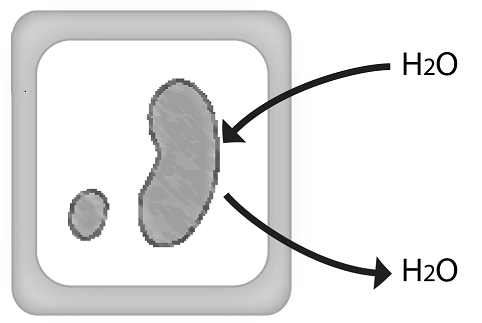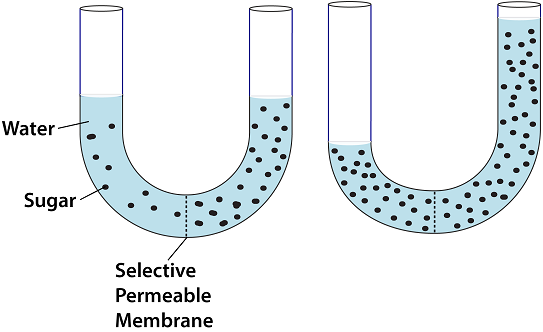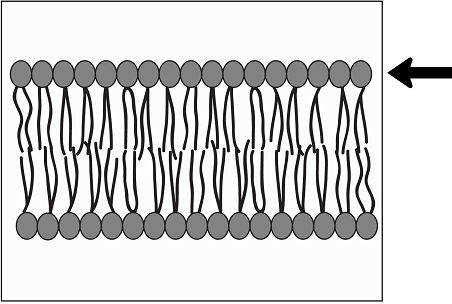Congratulations - you have completed .
You scored %%SCORE%% out of %%TOTAL%%.
Your performance has been rated as %%RATING%%
Your answers are highlighted below.
Question 1 |
Which structure-function pair is incorrectly matched?
Vacuole — Digestion, waste disposal, and storage | |
Chloroplast — Photosynthesis | |
Ribosome — Synthesis of lipids, detoxification of drugs and poisons | |
Lysosome — Breakdown of ingested substances, damaged organelles recycled |
Question 1 Explanation:
The correct answer is (C). Ribosomes are responsible for polypeptide synthesis and are located both free in the cytoplasm and on the rough endoplasmic reticulum. The smooth endoplasmic reticulum synthesizes lipids and detoxifies drugs and poisons.
Question 2 |
Which of the following is not a type of intracellular junction in animal cells?
Desmosomes | |
Gap Junctions | |
Tight Junctions | |
Plasmodesmata |
Question 2 Explanation:
The correct answer is (D). Plasmodesmata are channels in cell walls of plant cells.
Question 3 |
Which of the following statements regarding the nucleus is false?
Cellular Respiration | |
Houses chromosomes | |
Contains chromatin | |
Surrounded by a double membrane |
Question 3 Explanation:
The correct answer is (A). The mitochondria are responsible for cellular respiration.
Question 4 |
Which part of the cell allows the cell to discriminate in its chemical exchanges with its environment?
Cytoskeleton | |
Cilia | |
Plasma Membrane | |
Cell Wall |
Question 4 Explanation:
The correct answer is (C). The plasma membrane controls molecular traffic into and out of the cell. It is selectively permeable, meaning it allows some substances to enter the cell, but not others. This is essential because it call keep many harmful or dangerous substances from entering and destroying the cell while still allowing the necessary substances to enter.
Question 5 |
Which description best matches the diagram?

An animal cell in a hypertonic solution | |
An animal cell in a hypotonic solution | |
A plant cell in an isotonic solution | |
A plant cell in a hypotonic solution |
Question 5 Explanation:
The correct answer is (C). The diagram is showing a plant cell (notice the cell walls). If a cell is immersed in an isotonic solution, there will be no net movement of water. In other words, water will move in and out of the cell at an equal rate.
Question 6 |
Which diagram below shows the correct order diffusion of solute in water across a membrane?
 | |
 | |
 | |
 |
Question 6 Explanation:
The correct answer is (A). There is a net movement of solutes across membranes from an area of high concentration to an area of low concentration until they reach equilibrium.
Question 7 |
Which answer correctly describes what is happening in the following diagram?

Diffusion of sugar from an area of low concentration to an area of high concentration | |
Osmosis of water from an area of low water concentration to an area of high water concentration | |
Osmosis of water from an area of low solute concentration to an area of high concentration | |
Osmosis of sugar from an area of low water concentration to an area of high water concentration |
Question 7 Explanation:
The correct answer is (C). The sugar molecules are too large to move across the selectively permeable membrane. The water molecules move from an area of high water concentration (low solute concentration) to the area of low water concentration (high solute concentration) until the solution reaches equilibrium.
Question 8 |
In the diagram below, what is the arrow pointing to?

Hydrophilic portion of the phospholipid bilayer | |
Hydrophobic portion of the phospholipid bilayer | |
Transport proteins | |
The extracellular matrix |
Question 8 Explanation:
The correct answer is (A). The plasma membrane’s phospholipid bilayer is made up of two layers of phospholipids. Phospholipids have a hydrophilic (water loving) head and a hydrophoboic (water hating) tail. The hydrophilic heads are attracted to water, and therefore make up the outer part of the phospholipid bilayer.
Question 9 |
Which of the following statements is not true of a plasma membrane protein:
May aid in the transport of materials from one side of the membrane to the other | |
Membrane proteins of adjacent cells may hook together in various kinds of junctions | |
May be an enzyme or series of enzymes involved in metabolic pathways | |
May be a membrane carbohydrate used for cell-to-cell recognition |
Question 9 Explanation:
The correct answer is (D). Membrane proteins are made of protein, Answer (D) describes a carbohydrate.
Question 10 |
Which of the following is an example of active transport used by the cell to maintain internal concentrations of small solutes different form concentrations in the environment?
Facilitated diffusion | |
Osmoregulation | |
Sodium-potassium pump | |
Bulk transport |
Question 10 Explanation:
The correct answer is (C). The sodium-potassium pump exchanges sodium for potassium across the plasma membrane of animal cells by pumping ions against steep concentration gradients.
Question 11 |
How do large particles, such as proteins and polysaccharides, generally cross the plasma membrane into cells?
Exocytosis | |
Endocytosis | |
Cotransport | |
Gated channels |
Question 11 Explanation:
The correct answer is (B). Endocytosis is the process by which a cell takes in substances by engulfing them in new vesicles formed from the plasma membrane.
Question 12 |
White blood cells engulf invading bacterium in a process called:
Phagocytosis | |
Pinocytosis | |
Receptor-mediated endocytosis | |
Exocytosis |
Question 12 Explanation:
The correct answer is (A). Phagocytosis is the process by which cells engulf a particle by wrapping pseudopodia around it and packaging it into vacuoles.
Question 13 |
Which statement is true of both mitochondria and chloroplasts?
Both play a role in energy conversion | |
Both are sites of cellular respiration | |
Both convert energy from sugar, fats and other fuels into ATP | |
They are both part of the endomembrane system
|
Question 13 Explanation:
The correct answer is (A). Mitochondria generate ATP by extracting energy from sugars, fats and other fuels to make energy available in animal cells. Chloroplasts convert solar energy into chemical energy to make sugar available for plant cells. Thus, they both convert energy into a form that the cell can use.
Question 14 |
Which of the following is not part of the endomembrane system?
Endoplasmic reticulum | |
Golgi apparatus | |
Lysosomes | |
Mitochondria |
Question 14 Explanation:
The correct answer is (D). All other choices are part of the endomembrane system. The mitochondria are the site of cellular respiration.
Once you are finished, click the button below. Any items you have not completed will be marked incorrect.
There are 14 questions to complete.
|
List |
Next Practice Test:
Feedback Mechanisms >>
AP Biology Main Menu >>
